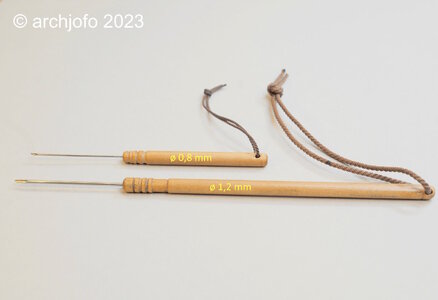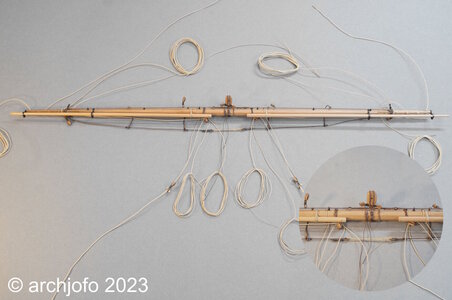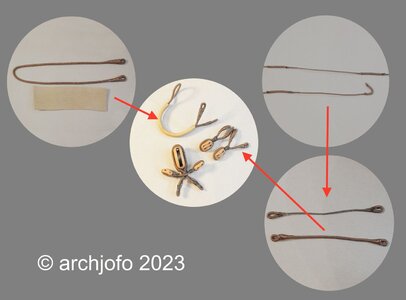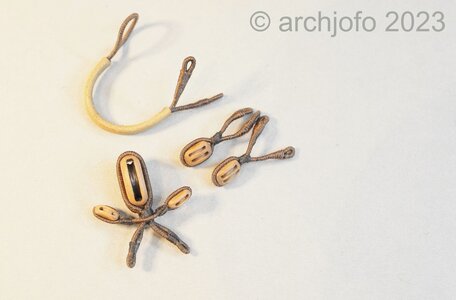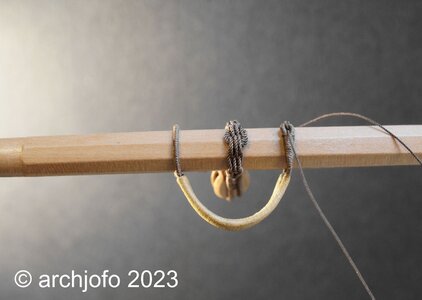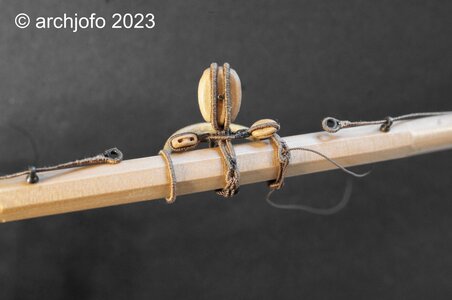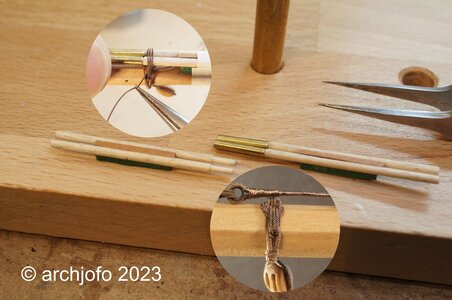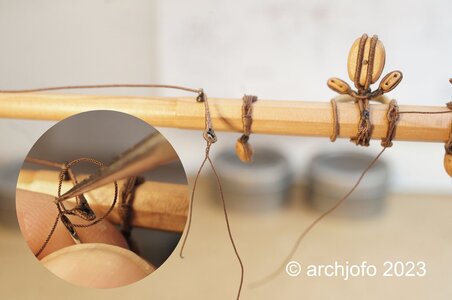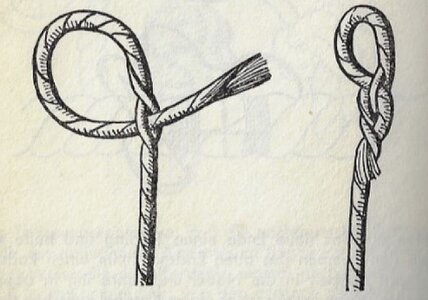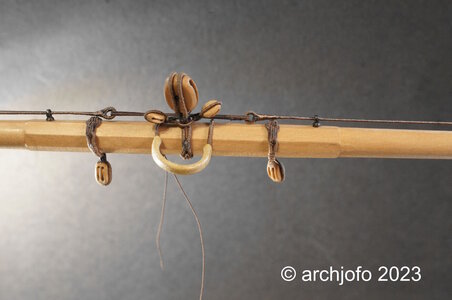@Uwek
@dockattner
@Steef66
@Mirek
@kuba91nt
@Hoss6262
Hello,
thank you very much for your attention and the very kind words.
Of course I'm also happy for the many LIKES.
Wish everyone here in the forum a
 Completion: Equipping the fore topsail yard - footropes and stirrups / Marchepieds et étriers etc.
Completion: Equipping the fore topsail yard - footropes and stirrups / Marchepieds et étriers etc.
By pulling in and tensioning the lanyard, the two halves of the jackstay were tensioned. The loose end of the ropge was carefully wrapped around the lanyard and tightened, as shown in various historical drawings.
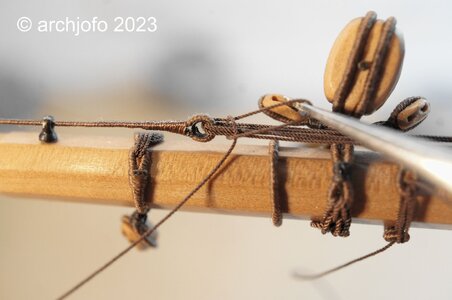
The footropes and stirrups for this yard were then made in the same way as for the main topsail yard, but with slightly reduced rope diameters.
The following picture shows the already prepared stirrups. Thimbles are spliced into one end of them, through which the rope of the footrope will later be pulled. The other ends were formed with served eye splices, which are then lashed to the jackstay.
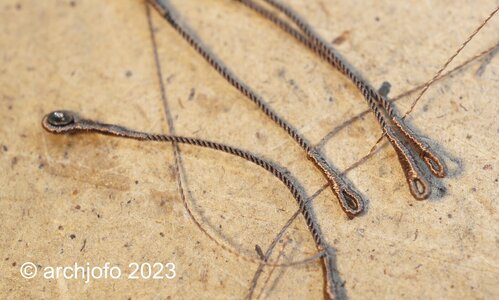
The next picture shows the finished footropes with details.
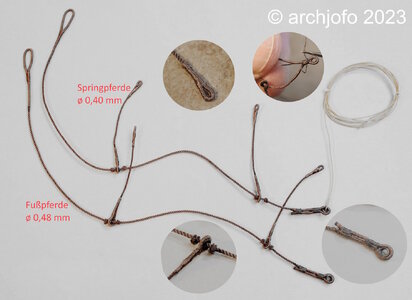
I continued with the lower blocks for clewlines l = 3.5 mm and the toggles to connect them to the topgallant sheets. As already mentioned, I made these from dogwood, a very hard and fine-grained wood, which is ideal for these small parts.
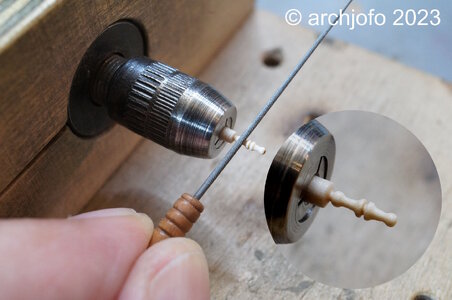
The following picture shows the stropped blocks for the clewlines, one is connected to a sheet. Next to it is a block for the main braces for comparison.
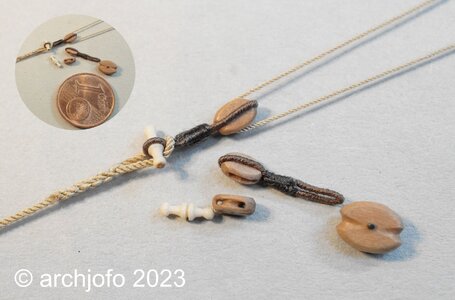
Here you can see the stropped blocks for the braces before they are placed on the yardarms.
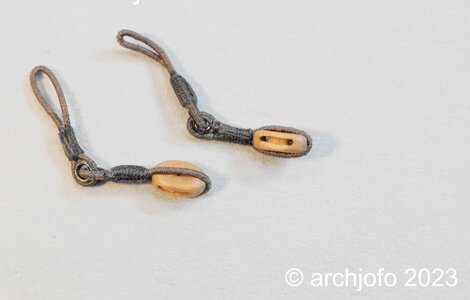
Here you can see how the studding sail booms are attached.
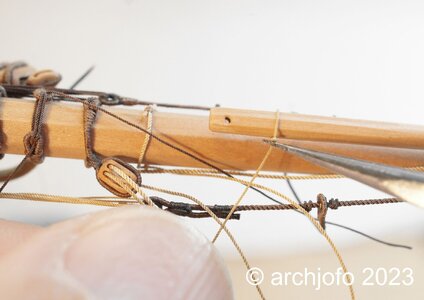
The next pictures show the fore topsail yard equipped with the necessary elements for rigging.
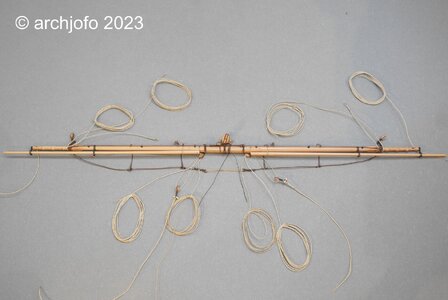
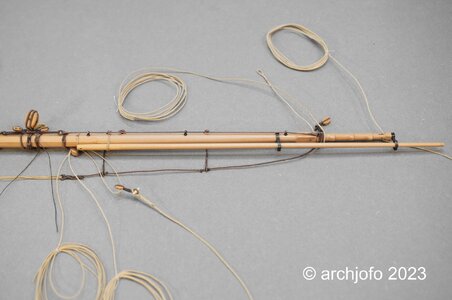
Last but not least, a picture of the yards fitted out so far.
Quite a jumble...
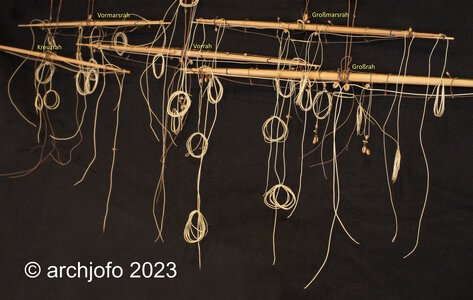
We continue with the cross yard.
To be continued ...






